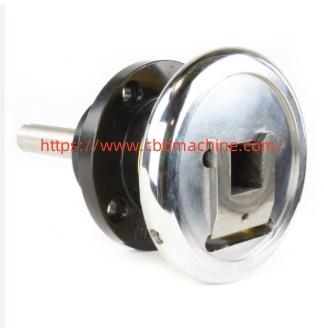In modern web guiding and winding systems, Safety Chuck technology plays a crucial role in ensuring operational stability and worker protection. Designed to support and transmit torque from air shafts or expanding shafts, these mechanical components simplify the coupling process during reel handling and replacement, especially in paper, film, foil, and textile industries.
The key advantage of this mechanism lies in its ability to securely lock rotating shafts while allowing quick release when necessary. Unlike traditional chucks that require manual intervention and complex tools, the improved safety-oriented design integrates spring-loaded or handwheel mechanisms that speed up the process while reducing the likelihood of injury. This not only helps streamline production but also creates a safer work environment.
A major consideration in choosing a chuck system is its compatibility with varying shaft diameters and torque demands. Fixed and sliding models offer flexibility depending on machine configuration and application requirements. Fixed types are ideal for compact designs, whereas sliding types allow for lateral movement to accommodate material expansion and reel positioning during operation.
In many processing lines, maintaining consistent tension and alignment during high-speed unwinding or rewinding is critical. The combination of a well-designed chuck and air shaft ensures smooth torque transmission and effective gripping, even under dynamic conditions. This is particularly useful in converting machinery where web materials vary in thickness and tension, making fast changeovers vital for productivity.
Another benefit is durability. Most industrial chucks are made of hardened steel or surface-treated alloys to withstand repeated load cycles and long-term mechanical stress. Optional features such as replaceable inserts, customized bore sizes, and dust-proof covers extend service life and reduce downtime.
From an operational standpoint, maintenance is minimal. The mechanical simplicity and open-face construction allow quick visual inspection and easy replacement of worn parts without dismantling the entire system. When incorporated into automated systems, the chuck's status can also be monitored digitally, enabling predictive maintenance and reducing unscheduled shutdowns.
Whether in printing, lamination, flexible packaging, or nonwoven fabric production, these chucks provide an efficient and reliable solution for roll handling. Engineers often consider load capacity, torque range, and mounting options when specifying them for new or retrofitted production lines. Furthermore, as industries move toward faster and safer manufacturing, these devices continue to evolve with new ergonomic enhancements and higher precision standards.
Ultimately, this component represents a blend of mechanical functionality and workplace safety. Its role may seem minor within an entire system, but its impact on efficiency, ease of operation, and injury prevention makes it a key element in modern roll-to-roll production processes.
Learn more about high-performance roll handling systems at https://www.cbbmachine.com/product/safety-chuck/

